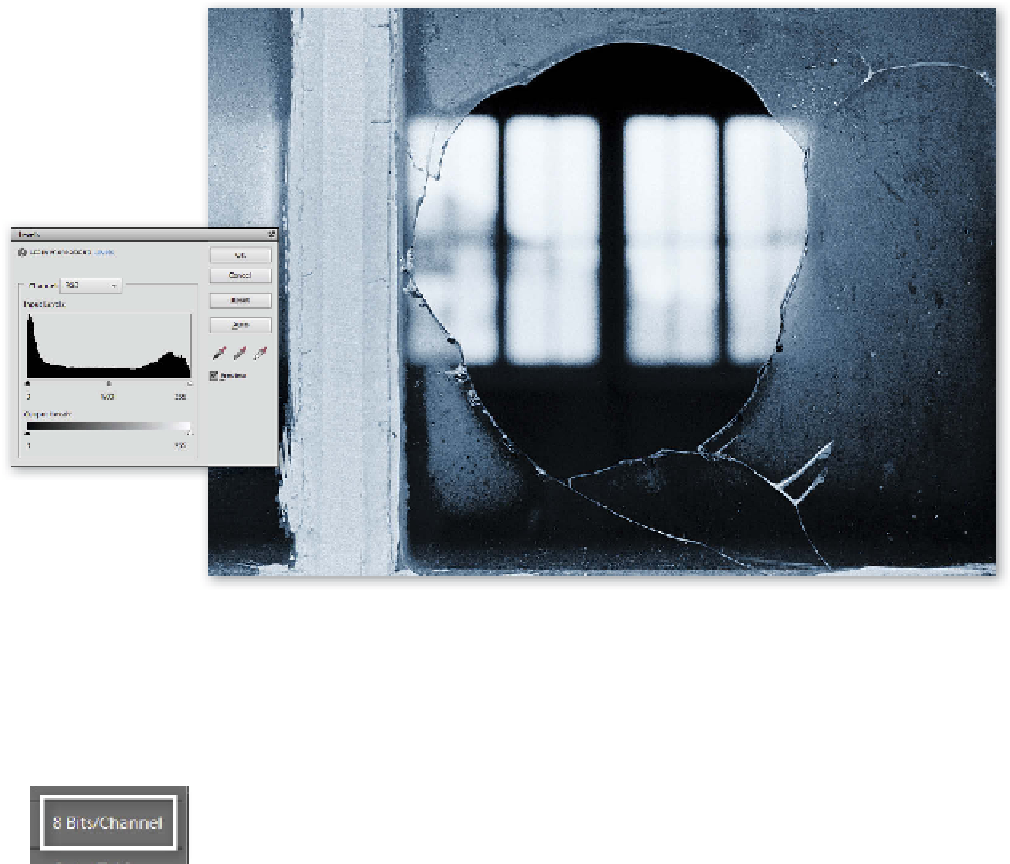Graphics Programs Reference
In-Depth Information
#
The best quality edits
and enhancement of
tone and color are made
on 16-bit files.
DEPTH CHANGES
Each digital file you create (capture or scan) is capable of representing a specific number
of colors. This capability, usually referred to as the 'mode' or 'color depth' of the picture, is
expressed in terms of the number of 'bits'. Most photos these days are created in 24-bit mode.
This means that each of the three color channels (Red, Green and Blue) is capable of display-
ing 256 levels of color (or 8 bits per channel). When the three channels are combined, a
24-bit image can contain a staggering 16.7 million separate tones/hues.
This is a vast amount of colors and would be seemingly more than we could ever need, see
or print, but many modern cameras and scanners are now capable of capturing up to 16 bits
per channel or 'high-bit' capture in either Raw or TIFF file formats. This means that each
of the three colors can have as many as 65,536 different levels and the image itself, with all
three channels combined, a whopping 281,474,976 million colors (last time I counted!). But
why would we need to capture so many colors?
Pictures that have
been imported into
the Organizer space or
opened in the Editor
as 16-bit files can be
converted to 8 bits per
channel via the Image
> Mode menu.
More colors equals better quality
Most readers would already have a vague feeling that a high-bit file (16 bits per channel) is
'better' than a low-bit (8 bits per channel) alternative, but understanding why is critical for
ensuring the best quality in your own work.

















Search WWH ::

Custom Search